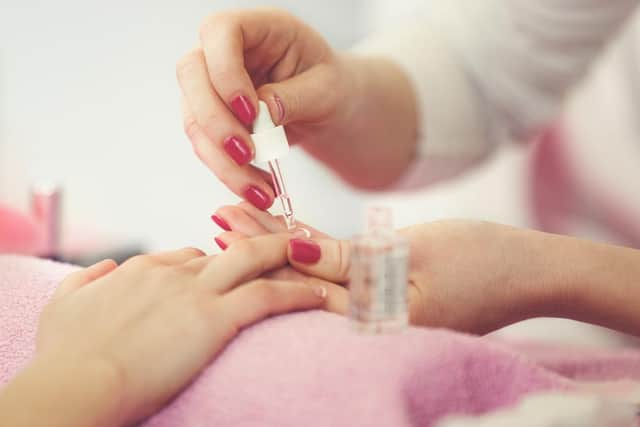Date nail bars, tanning salons and hairdressers are reopening in England - and when they can do face treatments again
and live on Freeview channel 276
England is slowly easing lockdown restrictions with a phased approach, with pubs, restaurants, hairdressers and beauty salons all now open.
But when will beauty salons be able to resume all beauty treatments? Here’s what you need to know.


When will beauty salons open?
Advertisement
Hide AdAdvertisement
Hide AdThose eagerly anticipating getting their nails done, or other beauty treatments, won’t have to wait any longer, as beauty salons have reopened in England, with new safety measures in place and limited services available.
Most non-essential shops reopened on 15 June, while hairdressers, along with pubs, cafes and restaurants, places of worship and socially distanced cinemas, could able reopen from 4 July.
Will all beauty treatments be allowed in salons?
Although some beauty treatments are still not allowed, you won’t have to wait much longer, as all beauty treatments will be able to resume from Saturday 15 August.
Beauty salons, tattoo studios, spas and barbers across England will be able to offer all close-contact services from Saturday, including treatments such as eyebrow threading and waxing, eyelash treatments and facials.
Advertisement
Hide AdAdvertisement
Hide AdHowever, new guidance will urge hairdressers to wear surgical grade face masks, alongside visors.
The government’s statement said: “This will help protect the customer and staff from respiratory droplets caused by sneezing, coughing, or speaking.”
Although beauty salons are now open and services such as nail treatments and waxes can resume, treatments on the face, which is considered a ‘high-risk zone’, are currently not permitted until 15 August.
Treatments in the “high-risk zone” are those carried out directly in front of the client’s face, which put people at higher risk of spreading COVID-19.
Advertisement
Hide AdAdvertisement
Hide AdThese include face waxing and threading, facials, eyelash and eyebrow treatments and microblading.
Prime Minister Boris Johnson originally announced on Friday 17 July that all beauty services, including those in the ‘high-risk zone’ would be able to resume from 1 August, but this was then pushed back due to coronavirus cases rising.
When announcing that this was to be the case, Boris Johnson: “You will remember at every point I have said our plan to reopen society and the economy is conditional, that it relies on continued progress against the virus, and we would not hesitate to put the brakes on if required.
“With those numbers creeping up our assessment is that we should now squeeze that brake pedal to keep the virus under control.”
What safety measures are in place at salons?
Advertisement
Hide AdAdvertisement
Hide AdThe government has issued guidance for beauty salons to ensure they are COVID-19 secure now that they are back open.
This includes social distancing measures and increased hygiene practices.
Businesses will also need to keep records of staff and customers, in case these details need to be shared with NHS Test and Trace.
Some of the guidelines include:
- Wearing further protective equipment when two metres social distancing cannot be maintained
Advertisement
Hide AdAdvertisement
Hide Ad- Avoiding skin-to-skin contact and wearing gloves where it is not crucial to the service
-Using screens or barriers to separate clients from each other, and to separate practitioners from clients, such as in nail salons
- Making sure limited and fixed numbers of workers work together if they have to be in close proximity to do their jobs
- Operate appointment-only booking systems to restrict the number of customers at any one time
Advertisement
Hide AdAdvertisement
Hide Ad- Increased handwashing and hygiene practices, including disposable equipment where possible
- Allowing for space between customers, and not allowing food or drink to be consumed by customers - except for water
- Keeping the activity time involved to a minimum